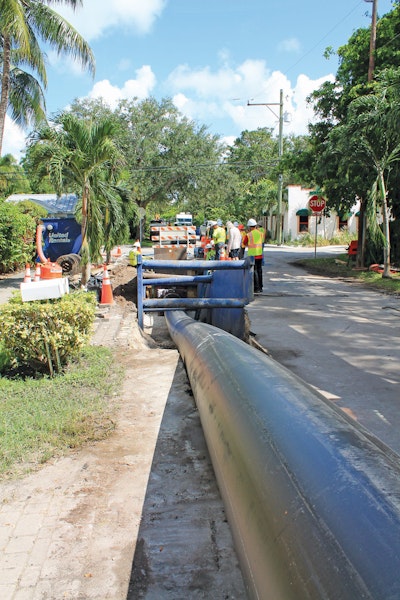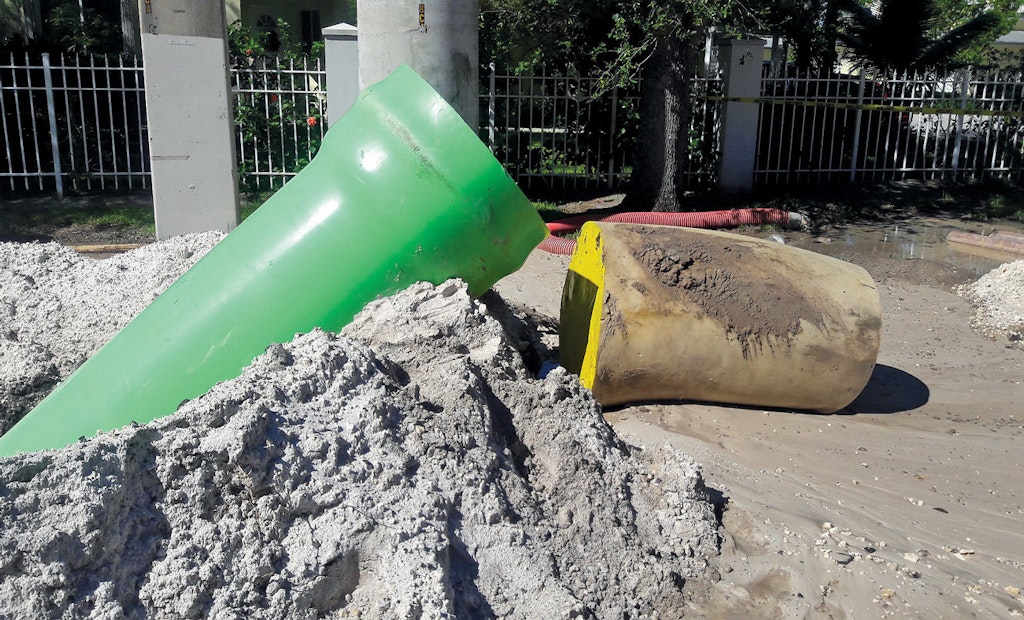Interested in Infrastructure?
Get Infrastructure articles, news and videos right in your inbox! Sign up now.
Infrastructure + Get AlertsBEST OF THE DECADE
Editor’s note: We’re digging through the archives and sharing our most popular stories from the past 10 years. This online exclusive was originally posted in August 2014 and was written by Ed Wodalski, who has since passed away. Ed was a good journalist and a good person, and he helped me a great deal in my early years at COLE Publishing. It’s only fitting that his stories still rank highly on MSWmag.com.
Long before the apple first fell on Sir Isaac Newton’s head, waste was flowing downhill. In many cases it still does. But as populations branched out to lower elevations, gravity no longer could do the job, and lift stations were needed to restore flow.
Today, not all waste flows downhill. The law of gravity hasn’t reversed, but technology — specifically low-pressure sewer systems — enable municipal waste to go where no waste has gone before: over undulating bedrock, through wetlands and across vast rural regions. It does this by using a grinder pump that turns solids into slurry that can be piped without regard for slope or groundwater depth.
Pressure sewer systems are also less invasive and less expensive to install. Maintenance is minimal, with electricity to power the pump being the primary cost. So why would a municipality install a gravity sewer system rather than a pressure system?
“Comfort,” says Kenneth Ligman, senior project manager for Becher Hoppe engineers and architects in Wausau, Wisconsin.
“Most people are accustomed to a gravity system. For the homeowner with a gravity system, there’s really nothing for them to do, unless they’re dumping grease down the sewer and clogging their pipes. With a grinder pump station, in five to 10 years there will be maintenance required on the cutters.”
Comparing apples to apples, Ligman says a low-pressure sewer system is less costly than a gravity sewer system.
“Gravity sewers need to be cleaned; they need to be flushed,” he says. “On a pressure sewer system, the pipe is always full of water. It’s counting on a number of pumps operating at the same time to get enough velocity to scour whatever might be settling in that pipe.”
There are also hybrids that use both gravity and pressure. So which system is best for you?
Electrical demands
Other than the lift stations, Mother Nature powers gravity sewer systems. Low-pressure grinder pump systems require a pump station at each residence or business; waste flows through a 1 1/4-inch lateral to a 2- to 6-inch-diameter main. Electrical costs for the pump stations are about $12 per year, typically paid by the consumer, although some municipalities choose to own and maintain the pumps.
“If there is a downside to a pressure system, it’s that it has a pump, and pumps use electricity,” Ligman says. “It’s not a lot of electricity but it is a pump, and pumps have parts that wear out and need to be replaced.”
Installation costs
Gravity sewer systems — pipe, manholes and laterals — cost about $50 to $60 per foot to install, he says. Gravity sewers also use opencut excavation, disrupting streets and landscape. Restoring a bituminous street can cost $40 to $50 a foot, Ligman says. Those costs combined, gravity sewers cost about $100 a foot for a city setting.
Pressure sewer systems use high-density polyethylene pipe, which can be directionally bored, resulting in lower restoration costs. Ligman says grinder pump stations cost about $10,000 to install and pipe about $20 a foot. Together, the cost of installing a pressure system is about $80 to $90 a foot.
Soil depths
“Gravity sewers are typically 10 to 12 feet deep so we can provide basement service: floor drains or clothes washers,” he says. “Where it gets extremely expensive is when sewers get about 20 feet deep.”
At this point, lift stations are installed and another, shallower sewer is started.
“The beauty of the pressure sewer system is the main in the street only needs to be deep enough to prevent frost impact, typically 7 1/2 feet,” Ligman says.
“If we’re along a river or lake, you would have to dewater your trench, so you’re looking at more dollars. If we’re up in the hills where we have shallow bedrock, you need to blast the rock out. That adds another layer of cost to the gravity sewer system,” he says. “Pressure sewer systems are typically above most groundwater and bedrock situations. So you avoid that cost.”
Population density
Gravity systems are also less cost-efficient on rural, far-spaced lots.
“You need people to pay for the pipe,” Ligman says. “In rural areas, it costs you more per foot for the pipe and restoration.”
Inflow and infiltration
Gravity sewer systems have a reputation for leaks and root growth, especially older infrastructure.
“Gravity sewer pipes are typically 13 feet long,” Ligman says. “A rubber O-ring gasket seals the pipe. When installed, the pipes are pressure-tested to show there isn’t leakage, but over time things happen: Ground shifts, there’s traffic impact, and sewers can settle and crack.”
With pressure systems, the HDPE pipe is fused.
“You end up with what I call one long noodle,” he says. “There’s a lower chance of leakage into the system. About the only place it might leak is at the pump station and the service lateral.”
Making the call
“Normally you would compare the costs of both systems in what we call a total present worth evaluation, where you take into consideration the energy cost of each home and the cost of replacing the pumps on a 7- to 10-year basis and you look at that over 20 years,” Ligman says. “If it’s an area where the road needs to be upgraded anyhow, it’s not really a cost assigned to the sewer since that’s part of your normal road maintenance program. So that would weigh in my evaluation of which type of system to install.”









